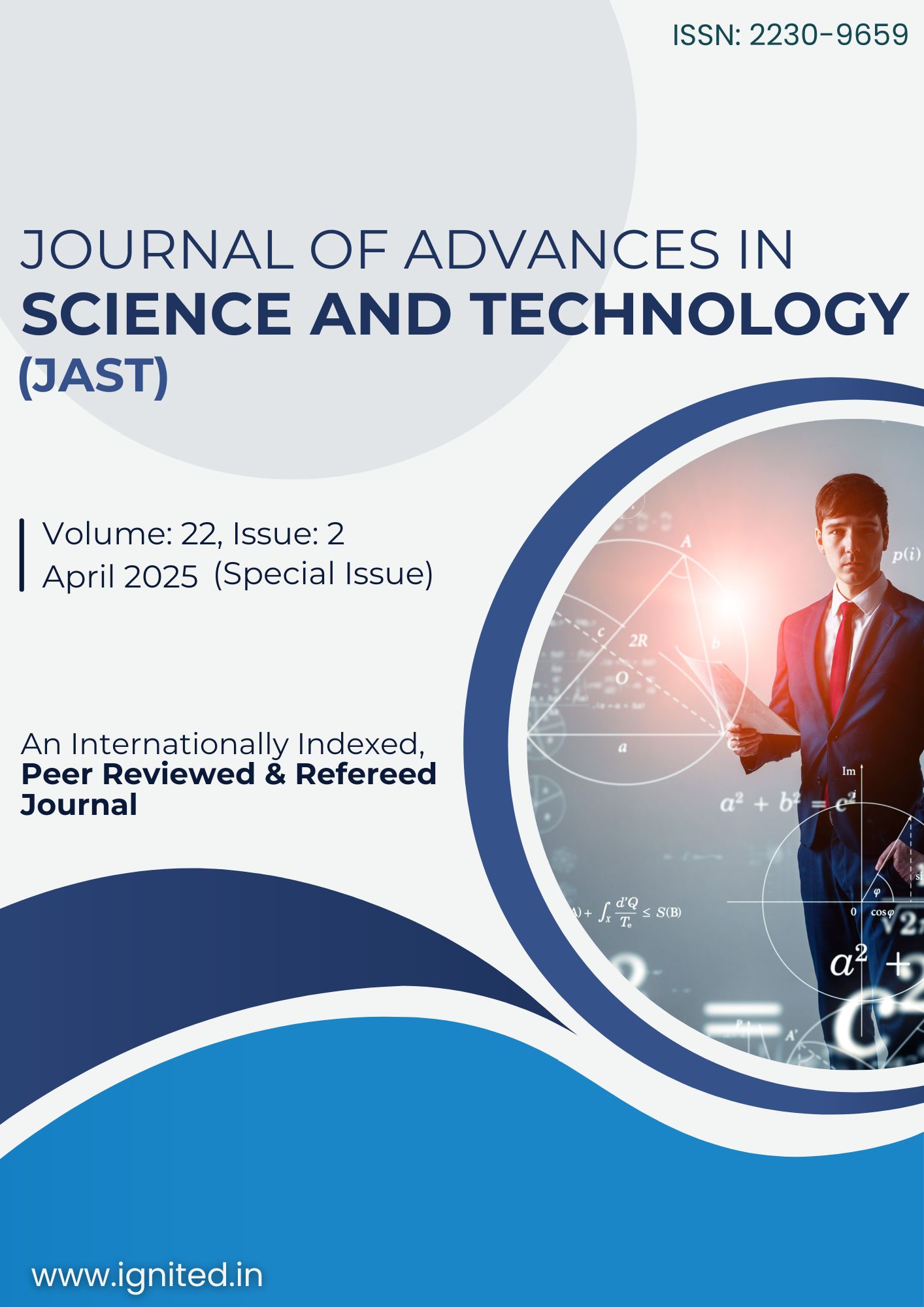Numerical modelling and mathematical modelling of two-phase blood flow
Main Article Content
Authors
Abstract
The study of two-phase blood flow through numerical and mathematical modeling has emerged as a crucial approach for understanding the complex behavior of blood, a non-Newtonian fluid comprising plasma and various cellular components, primarily red blood cells. This research aims to develop comprehensive models that capture the dynamics between these two distinct phases—fluid (plasma) and particulate (cells)—within the circulatory system. Mathematical modeling provides a framework for formulating the governing equations based on principles of fluid dynamics, mass conservation, and momentum transfer. These equations account for factors such as viscosity, density variations, interfacial interactions, and shear-thinning behavior. Numerical methods, including finite difference, finite element, and lattice Boltzmann techniques, are employed to simulate blood flow in various geometries representing arterial and microvascular networks. The models aid in predicting flow characteristics such as velocity profiles, pressure gradients, and hematocrit distribution under both physiological and pathological conditions. This dual-phase modeling enables the investigation of complex phenomena like cell aggregation, plasma skimming, and flow separation in stenosed or bifurcated vessels. The insights gained are instrumental in enhancing the understanding of cardiovascular health, optimizing biomedical device design, and improving clinical diagnostics. The study thus bridges theoretical fluid mechanics with practical applications in hemodynamics and medical research.
Downloads
Article Details
Section
References
- Ahmed, S. A., Giddens, D. P. (1983). Velocity measurements in steady flow through axisymmetric stenoses at moderate Reynolds numbers. Journal of Biomechanics, 16(7), 505–516.
- Eguchi, Y., & Karino, T. (1995). Macromolecular transport in stenosed arteries studied by numerical and experimental methods. Journal of Biomechanics, 28(5), 543–550.
- Faivre, M., Abkarian, M., Bickraj, K., & Stone, H. A. (2006). Geometrical focusing of cells in a microfluidic device: An approach to separate blood plasma. Biorheology, 43(2), 147–159.
- Carboni, M., Di Giuseppe, M. G., & Romano, M. (2013). A two-phase model of cerebral microembolism formation during mechanical thrombectomy. Journal of Biomechanics, 46(6), 1064–1070.
- Dendukuri, D., & Doyle, P. S. (2009). The synthesis and rheology of non-spherical red blood cell analogs. Lab on a Chip, 9(18), 2399–2405.
- Doyeux, V., Podgorski, T., Peponas, S., Ismail, M., & Coupier, G. (2011). Spheres in the vicinity of a bifurcation: Elucidating the Zweifach-Fung effect. Physical Review Letters, 107(4), 048102.
- Gao, H., & Zhao, X. (2014). Modeling of blood flow and embolus transport in cerebral arteries using two-phase CFD. Biomechanics and Modeling in Mechanobiology, 13(6), 1261–1273.
- Gidaspow, D. (1994). Multiphase flow and fluidization: Continuum and kinetic theory descriptions. Academic Press.
- Caro, C. G., Fitz-Gerald, J. M., & Schroter, R. C. (1971). Atheroma and arterial wall shear: Observation, correlation and proposal of a shear dependent mass transfer mechanism for atherogenesis. Proceedings of the Royal Society of London. Series B, Biological Sciences, 177(1046), 109–133.
- Barber, J. O., Alberding, J. P., Restrepo, J. M., & Longmire, E. K. (2014). Red blood cell transport in confined and unconfined microchannels. Physical Review E, 89(6), 063012.
- Bäumler, H., Neu, B., Donath, E., & Kiesewetter, H. (1999). Basic phenomena of red blood cell rouleaux formation. Biorheology, 36(5–6), 439–442.
- Fitt, A. D., & Wilson, S. K. (1999). The mathematical modeling of whole blood flow in a stenosed artery. IMA Journal of Mathematics Applied in Medicine and Biology, 16(4), 365–381.
- Fogelson, A. L., & Neeves, K. B. (2015). Fluid mechanics of blood clot formation. Annual Review of Fluid Mechanics, 47, 377–403.
- He, X., & Ku, D. N. (1994). Pulsatile flow in the human left coronary artery bifurcation: Average conditions. Journal of Biomechanical Engineering, 116(1), 39–46.
- Akbarzadeh, M., & Najafi, A. (2019). Simulation of non-Newtonian blood flow using coupled two-phase lattice Boltzmann method. Journal of Mechanical Science and Technology, 33(4), 1767–1775.

